Your Ultimate Guide to Festival Fashion: From Fabric to Footwear & Everything In Between
I will never, ever forget my first multi-day music festival. I was so sure I had it all figured out. I packed my coolest denim shorts, a stack of cotton band tees, and a pair of brand-new, military-style boots that looked amazing. And by noon on day two? I was an absolute wreck.
In this article
The cotton shirt was soaked and clinging to me like a wet noodle. My shorts had rubbed my skin raw. And my feet were just a collection of angry blisters from boots that weren’t even close to being broken in. I spent more time hiding in the shade feeling sorry for myself than actually enjoying the music. It was a brutal lesson, but a crucial one: festival attire isn’t just about looking the part. It’s gear. It’s the equipment that helps you survive long days, wild weather, and miles of walking, all while feeling good enough to dance your heart out.
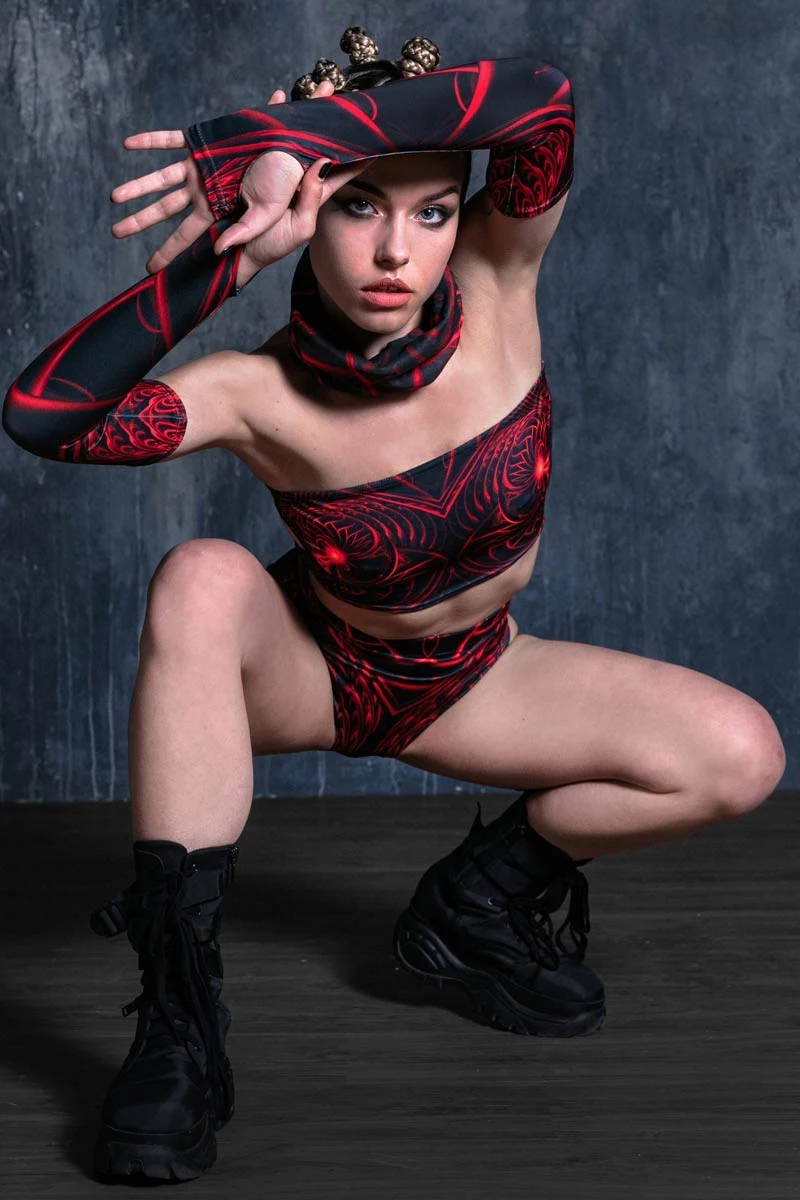
Over the years, I’ve been to festivals all over, from dusty desert landscapes to muddy European fields. I’ve learned that the best music festival outfits —the ones that look incredible and feel just as good—are built on a solid foundation of practical knowledge. It all starts with understanding your materials. This guide is all that hard-won knowledge, designed to help you build a look that’s not only a vibe but also comfortable, durable, and safe, so you can focus on making memories.
It All Starts with Fabric
Before you even think about sequins or patterns, let’s talk about the stuff that’s going to be touching your skin for 12+ hours a day. Seriously, this choice will make or break your entire weekend. It’s less about fashion and more about basic science.
Why Your Fabric Choice is Everything
Your body cools itself by sweating, and as that sweat evaporates, it pulls heat away from you. The fabric you wear is either helping that process or stopping it dead in its tracks. This is probably the most important technical decision you’ll make.
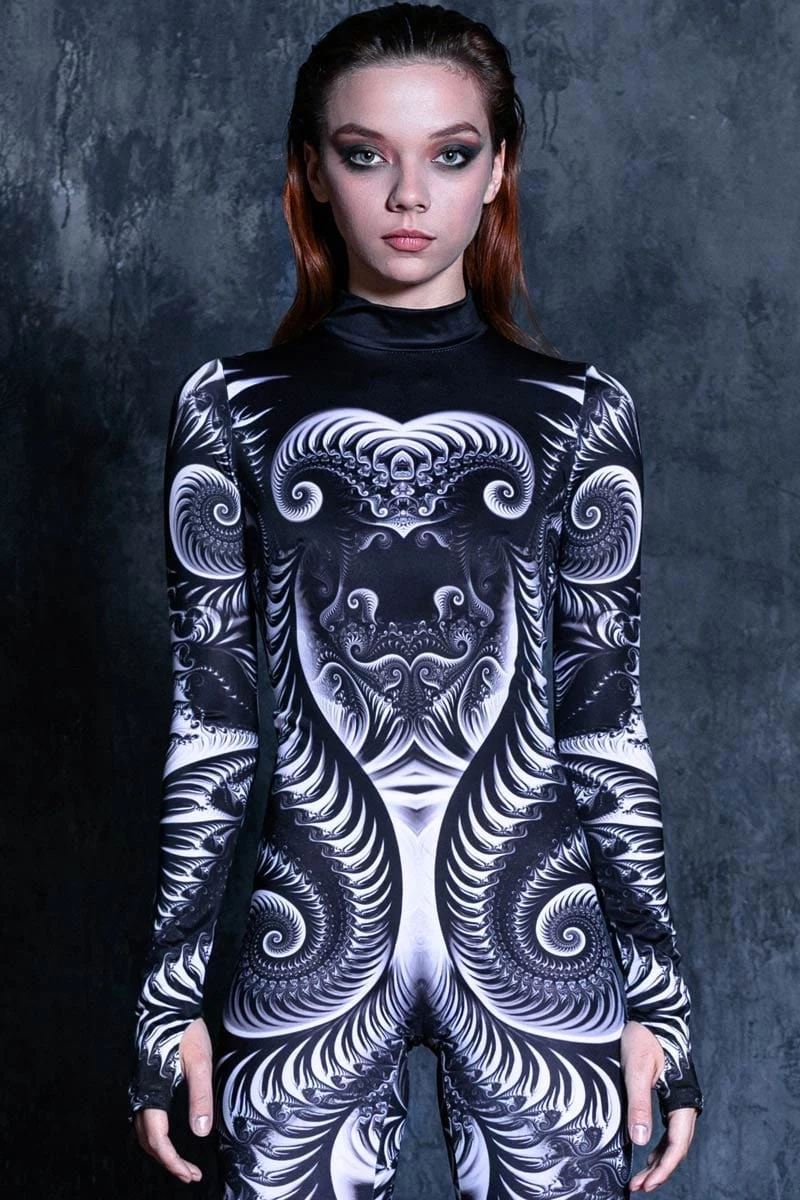
First up, let’s talk about cotton. It feels so soft and lovely when you first put it on, right? But the moment you start to sweat, it becomes your enemy. Cotton is hydrophilic, which is a fancy way of saying it loves water. It soaks up every drop of moisture and just holds onto it, getting heavy, clammy, and taking forever to dry. A wet cotton shirt will actually make you colder when the temperature drops at night. I only use cotton for super loose, airy outer layers now, like a kimono where it’s not plastered against my skin.
So, what’s the alternative? Say hello to synthetics. Most of the awesome festival gear you see is made from a polyester and spandex blend (you might see it called Lycra). These fabrics are the opposite of cotton—they’re hydrophobic, meaning they push water away. Instead of absorbing your sweat, they wick it to the fabric’s surface where it can evaporate in a flash. This is what keeps you feeling dry and comfortable.
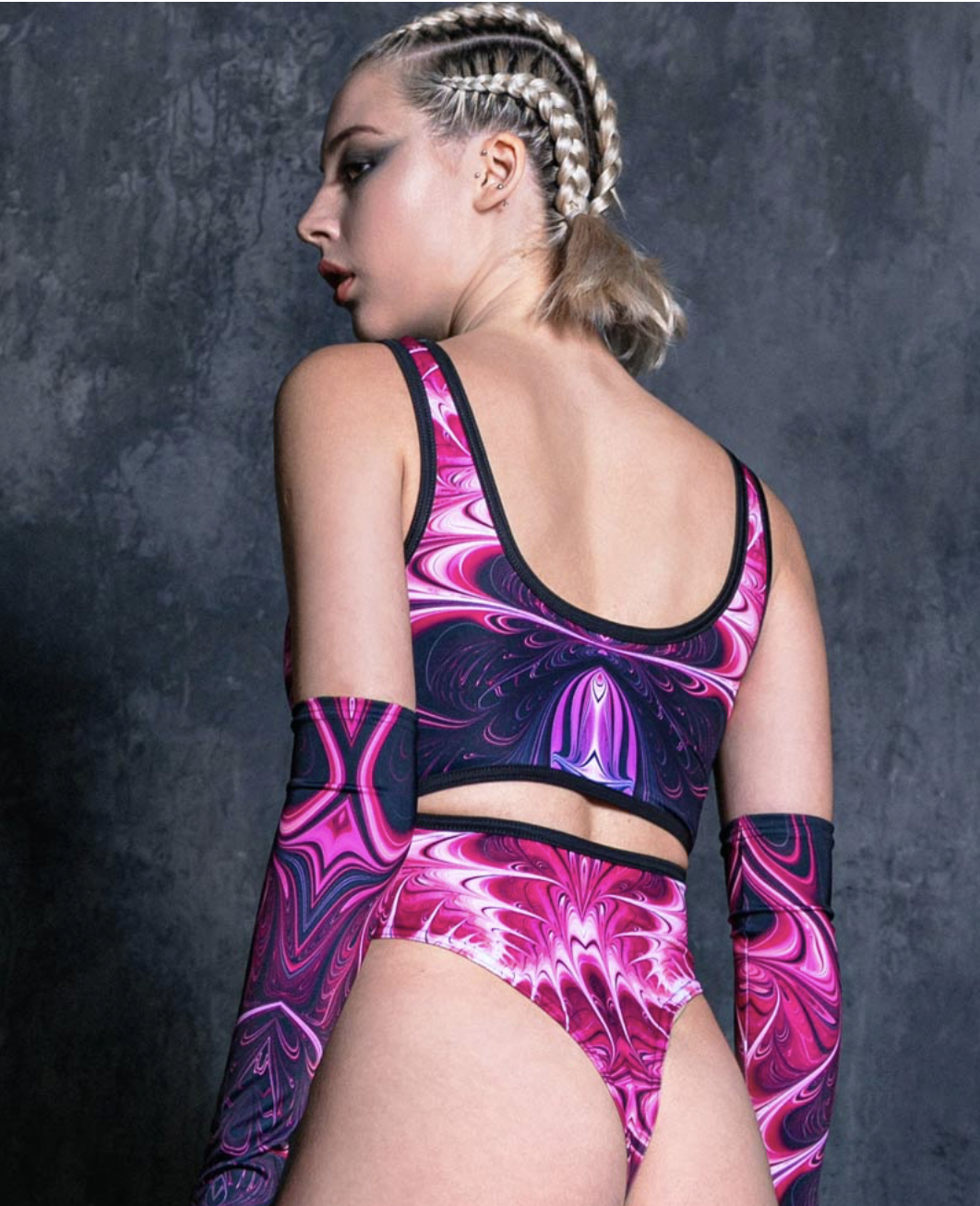
A quick pro-tip when shopping: look for the fabric weight, which is measured in GSM (grams per square meter). A cheap, flimsy piece might be around 150 GSM and will likely be see-through when you stretch it. For leggings or a bodysuit that you want to be opaque and supportive, aim for something in the 190-220 GSM range. A good visual test? If you can easily see the color of your hand through the fabric when you stretch it, it’s too thin for bottoms. The only real downside to synthetics is that they can hold onto odor-causing bacteria. Honestly, just pack an extra base layer or two. It’s worth it.
A Few Other Key Players
Of course, it’s not just a two-horse race. You’ll see a few other fabrics out there.
Rayon, viscose, and bamboo are all semi-synthetics made from plant pulp. They are incredibly soft, breathable, and drape beautifully, making them perfect for flowy dresses, palazzo pants, or loose tops. Just be aware they aren’t as tough as polyester and can get stretched out or misshapen when wet.
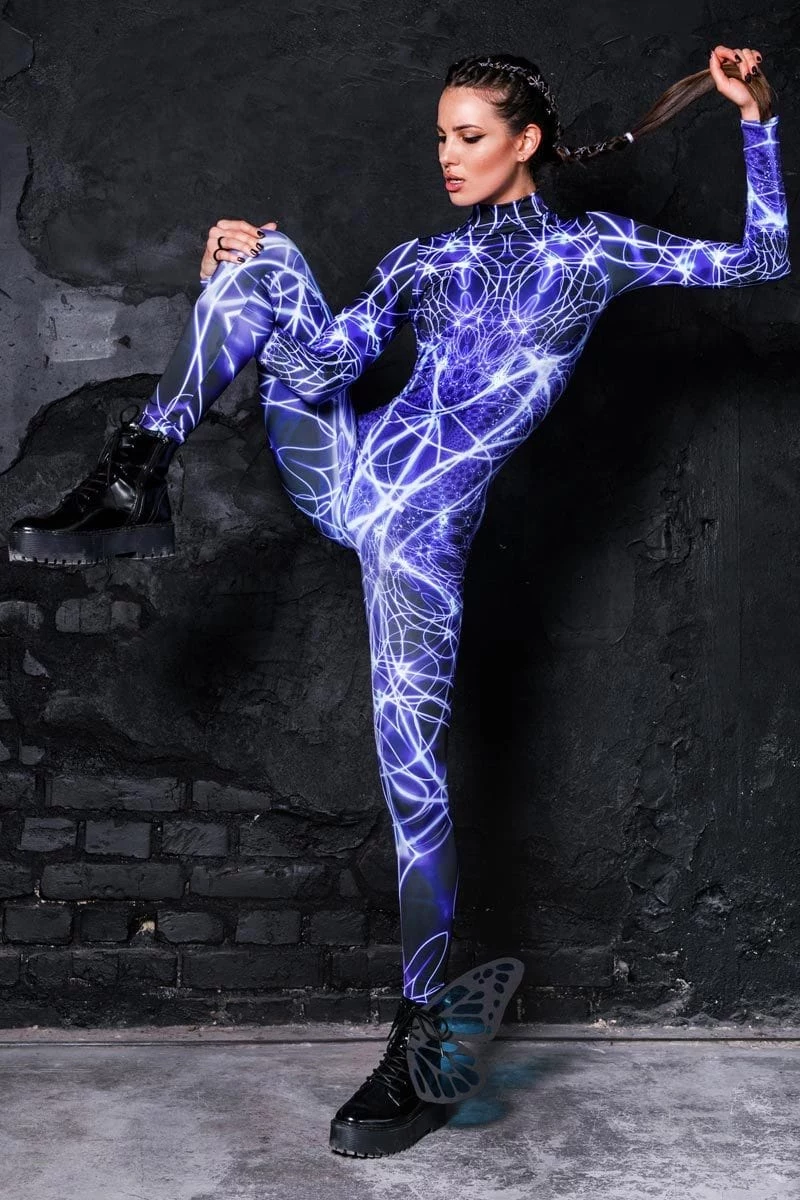
And who can forget the mighty faux fur coat? It’s a classic for cold festival nights, especially in the desert where temperatures plummet. But a heads-up is in order: it’s plastic. It doesn’t breathe at all, and it can be a fire hazard. Never, ever stand too close to open flames, fire performers, or space heaters. I once saw a friend’s coat get singed by a passing fire spinner, and it was a scary reminder to be careful. Some coats are treated with fire retardants, but most cheap ones are not.
Lastly, there’s PVC and vinyl. They give off a killer futuristic vibe but are completely non-breathable. Think of it like wearing a plastic bag. A full PVC outfit in the sun is a one-way ticket to heat exhaustion. Use these for accents—a cool harness, a belt, or maybe some cuffs—not for a full garment.
Building Your Outfit from the Ground Up
A truly successful festival outfit is a system of layers that all work together. Seasoned pros don’t just throw clothes on; they build their look with a purpose, starting with the most important part.
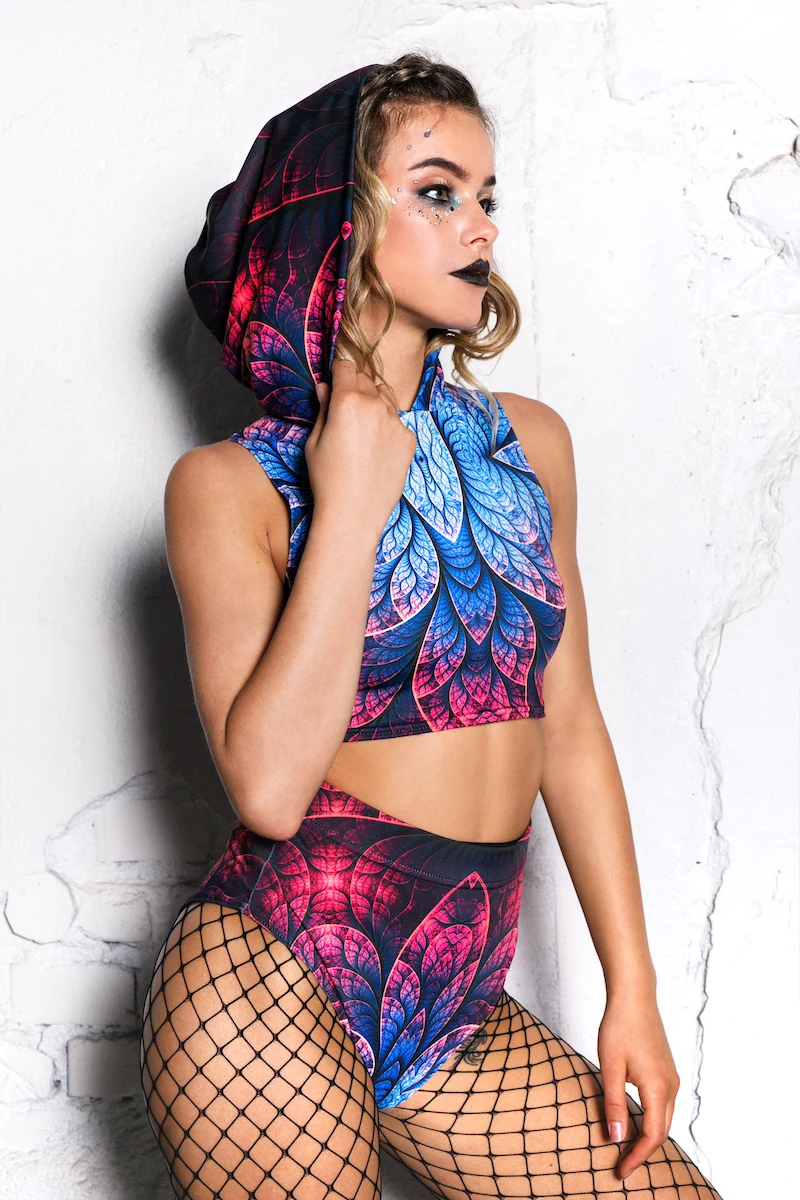
Step 1: Footwear First (This is Non-Negotiable)
Your feet are going to take an absolute beating. You’ll walk for miles, stand for hours, and dance on who-knows-what kind of terrain. Bad shoes can literally end your festival. I’ve seen more people sidelined by gnarly blisters than anything else.
- Boots: Combat or hiking boots are a fantastic choice. They give you ankle support and protect your toes from being trampled in a crowd. Think well-worn Doc Martens or a sturdy hiking boot. The golden rule is they MUST be broken in. Wear them on long walks for weeks before the event. An investment of $150+ here will pay off for years.
- Supportive Sneakers: Don’t underestimate a great pair of running or walking shoes. For festivals on pavement or hard-packed dirt, the cushioning is a lifesaver. Brands like Hoka or Brooks are famous for all-day comfort for a reason.
- Platforms: They look cool, but man, most are built with zero arch support. If you go for platforms, get them from a reputable brand and immediately add high-quality cushioned insoles. I made the mistake of wearing a cheap pair once and my arches were screaming for a week.
Quick tip: Pack moleskin and apply it to any spot that feels like it’s rubbing before it becomes a blister. And bring at least one pair of clean, high-quality socks for each day. That mid-day sock change is a game-changer.
Step 2: The Base Layer (Your Second Skin)
This is what’s right against your skin, and its only job is to be comfortable and manage moisture. This is where you put that fabric knowledge to use. A polyester-spandex bodysuit or a pair of leggings with a sports top is a perfect foundation. When buying, check the seams. You want to see flatlock stitching, where the seam lies flat. It’s a technique from high-end athletic wear that prevents chafing while you’re dancing.
You can find great options on festival-specific sites like iHeartRaves or Dolls Kill, where a bodysuit might cost between $40 and $90. But here’s a lesser-known trick: check the sale rack at athletic stores. A top-quality base layer from a brand like Lululemon or Old Navy Active can often be found for a steal, and their comfort is unmatched.
Step 3: Accessories & Mid-Layers (The Fun Part!)
This is where you really get to express yourself. It could be a matching set, a wild kimono, a harness, or a decorated vest. But before you commit, do a simple test at home: dance around, jump, bend over. Does anything pinch, ride up, or feel restrictive? If it’s annoying in your living room, it’ll be torture on the festival grounds.
And don’t forget your gear! A good bag is essential. The big debate is often fanny pack versus hydration pack. A fanny pack is great for keeping your valuables secure and accessible. A hydration pack (like a CamelBak) is amazing because it carries your water, but it can be a bit bulky in a crowd. I often use both—a small fanny pack for my phone and wallet, and the hydration pack for water and layers.
Oh yeah, and a hat and sunglasses are not just accessories; they are vital sun protection.
Step 4: The Outer Layer (For When the Sun Goes Down)
Even in the hottest places, it can get surprisingly chilly at night. An outer layer isn’t optional. The faux fur coat is a statement piece, but it’s bulky to carry. For pure practicality, you can’t beat a packable jacket. Look for a lightweight down or synthetic-fill jacket that can squish down into a tiny bag. You can stash it in your pack all day and barely know it’s there. You can find excellent options at places like Uniqlo or outdoor recreation stores, usually for between $70 and $120.
The Aftermath: Getting the Funk Out
So the festival’s over, and you’re left with a pile of dusty, sweaty, and probably glitter-covered clothes. Getting that unique ‘festival funk’ out of synthetics can be a challenge. My go-to method is to do a pre-soak before the main wash. Fill a tub or bucket with cool water and a cup of white vinegar, let your clothes soak for an hour, then wash them as usual. There are also special sports detergents designed to break down bacteria in technical fabrics that work wonders.
Putting It All Together: Your Go-Bag Mentality
So, as you pack, think in systems. You’ll want at least three moisture-wicking base layers to rotate through. Don’t skimp on socks—pack at least four or five pairs of good ones. Bring your one, perfectly broken-in pair of boots. Add your expressive mid-layers, your essential packable warm layer, and your accessories. By building your outfit with comfort and function as the foundation, you’re free to focus on the magic of the moment, not on your aching feet or clammy shirt. And that, my friends, is what it’s all about.
Inspirational Gallery
How to choose the right bag for a festival?
Functionality is everything. Your hands need to be free for dancing, holding a drink, or taking photos. The undisputed champions are the crossbody bag and the modern fanny pack (or belt bag). Look for models with multiple zippered compartments to keep your phone, wallet, and sunscreen separate and secure. A durable, water-resistant material like nylon is a huge plus. The Kånken Sling from Fjällräven offers surprising space in a compact form, while brands like Herschel Supply Co. offer countless stylish and sturdy belt bag options.
- Protect your feet from the elements with closed-toe shoes.
- Choose socks made of merino wool or a synthetic blend, never cotton, to wick away sweat and prevent blisters.
- Ensure your footwear has some form of arch support for all-day standing and walking.
The secret to a multi-day glow-up: Glitter isn’t just for your face. The real game-changer is biodegradable glitter. Standard plastic glitters are microplastics that harm the environment, washing off you and into the local ecosystem. Brands like BioGlitz or Sun & Glitter offer plant-based alternatives made from eucalyptus cellulose that sparkle just as brightly but break down naturally. You get all the shimmer with none of the environmental guilt.
According to a 2019 UK study, an estimated 250,000 tents are abandoned at music festivals in the country each year, along with countless single-use outfits.
This staggering waste has fueled a move towards ‘conscious festival-ing’. Instead of buying a cheap, disposable outfit, invest in versatile, durable pieces you’ll love and wear again. Think vintage denim, a quality rain jacket, or boots that will last for years. Renting a statement piece is also a fantastic, sustainable alternative for something truly special.
Beyond the main outfit, your accessories are your survival kit. They’re the small details that make a huge difference in your comfort and safety.
- A Wide-Brimmed Hat: A baseball cap is good, but a bucket hat or straw fedora provides far better sun protection for your neck and ears.
- Polarized Sunglasses: They don’t just look cool; they reduce glare, making it easier to see the stage and reducing eye strain over a long, bright day.
- A Bandana or Buff: Incredibly versatile. Use it to protect your neck from the sun, tie back your hair, or cover your mouth and nose in a dusty field.
Denim Jacket: The iconic, timeless choice. It’s tough, looks great with anything, and offers decent warmth for a cool evening. However, it’s heavy to carry and useless in the rain.
Packable Rain Jacket: The practical champion. A modern windbreaker from a brand like Patagonia or The North Face is incredibly lightweight, packs down to almost nothing, and will save you from a sudden downpour.
For pure style points, denim wins. For smart, all-weather preparation, the packable jacket is the undisputed MVP.
- Stay comfortable from the scorching midday sun to the chilly late-night set.
- Easily adjust your outfit’s warmth level without a full change.
- Create multiple different looks from a few core items.
The secret? Smart layering. Start with a moisture-wicking base like a tank top in a bamboo or modal blend. Add a loose, breathable overshirt—linen is perfect. Finally, have a warmer layer like a fleece or hoodie ready to tie around your waist for when the sun goes down.
Think beyond just your clothes. The sun, dust, and sweat can wreak havoc on your skin and hair. A small pouch with a few essentials is a non-negotiable. Include a high-SPF, water-resistant sunscreen for face and body (Supergoop! PLAY is a cult favorite for a reason), a nourishing lip balm with SPF, a pack of biodegradable face wipes for a quick refresh, and a travel-sized dry shampoo to combat greasy roots on day three.
Don’t underestimate the power of refraction. A single sequin or piece of body glitter can act like a tiny magnifying glass, focusing the sun’s rays and potentially causing a small, localized sunburn on your skin.
A common mistake: Forgetting about the journey home. After three days of dancing, you will not want to put on tight shorts or complicated boots. Always pack a simple, comfortable ‘going home’ outfit. Think soft joggers or leggings, a loose t-shirt, and a pair of easy-to-slip-on shoes like slides or sneakers. Your tired body will thank you.










